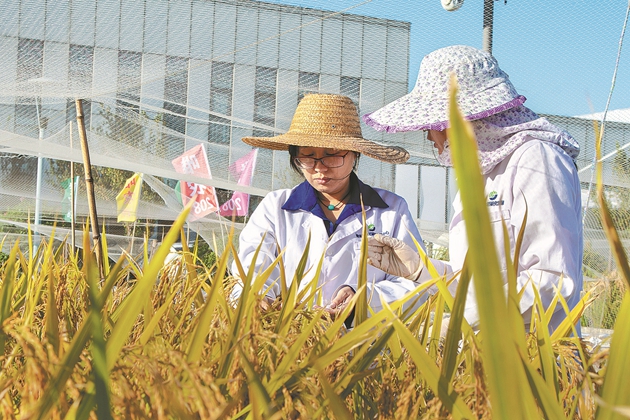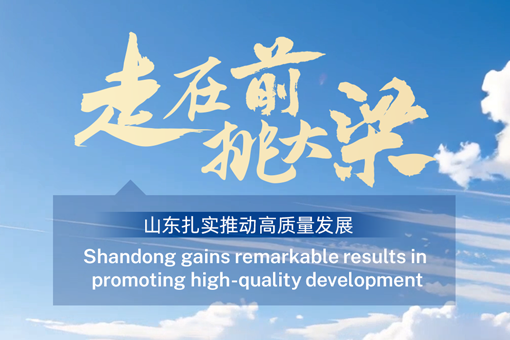Seeds of hope spring from seawater rice
By ZHANG ZHOUXIANG and JIAO JIE| (China Daily)| Updated : 2023-03-08
Print Print
Researchers at the Qingdao center check rice plants in September. [Photo provided to China Daily]
Challenges faced
There are challenges to seawater rice research, including the belief among some that it is not worth investing in such endeavors, as the flavor of the rice is not that good.
Despite this, seawater rice is being sold on domestic e-commerce platforms, with many customers saying it tastes delicious.
One netizen said, "The name led me to think that the rice might be salty, but when I tasted it, I realized this was far from the case." Another netizen commented, "It tastes exceptionally well."
Liu, from the Qingdao research center, said: "The roots of seawater rice plants can draw nitrogen, phosphorus and potassium, making saline soil more fertile. The roots also make this soil porous, while the microbes that grow in them improve bacteria groups," she said.
It is necessary to see the "big picture" regarding seawater rice, which is important not only for producing hundreds of kilos of food, but also for turning soil previously unfit for cultivation into arable land, Liu said.
"That is the most significant point of seawater rice — it can help increase the amount of arable land without diminishing the nation's forests or grasslands," she said.
Liu Hongzhi, senior researcher and vice-secretary-general at the Chinese Society for Environmental Studies, said seawater rice is one of several types of salt-tolerant plants that can be used to transform saline soil into arable land, with salt-tolerant grass and beans also fulfilling this function.
She said such plants will perform better if land is divided into small square areas to conserve water. "We need to gain more experience to further popularize seawater rice," Liu Hongzhi added.
Wei, from the Chinese Academy of Sciences, said ways need to be found to transform saline soil in the northwest of the country into arable land. "Seawater rice teams have done a good job, but they could face a long road ahead," he said.
Seawater rice has further development potential, and its water-saving benefits should not just be compared with other types of rice, but with plants such as potatoes, Wei said. Only when they can save the same amount of water as potato plants will seawater rice plants become more popular in the northwest, he added.
With vast areas of saline soil being turned into arable land in the future, the efforts made today to make this possible will mark a significant breakthrough.
Zhang said seawater rice could be used to increase the amount of arable land in China by some 6 or 7 percent.
More important, this land could be used without it encroaching on forests or grasslands. By greening previously grassless land, seawater rice helps improve the environment for everyone, Zhang added.
Yuan, the "father of hybrid rice", once said: "Of the 1.5 billion mu (one mu equates to 0.67 hectares) of saline land in China, seawater rice can be grown on 200 million mu. If every mu produces 300 kilograms of rice, we will have 50 billion more kilograms of rice, enough to feed another 200 million people."
The dream of the late scientist, as well as that of China's 1.4 billion people, is set to be realized.
Zuo Zhuo contributed to this story.

 Xi's Moments
Xi's Moments  Shandong gains remarkable results in promoting high-quality development
Shandong gains remarkable results in promoting high-quality development  2025 National Two Sessions
2025 National Two Sessions